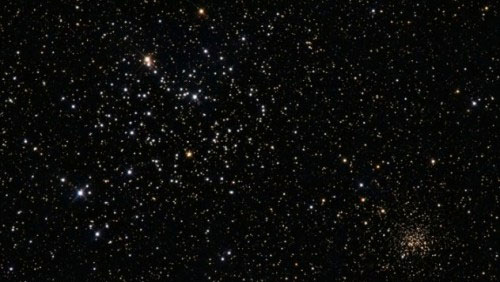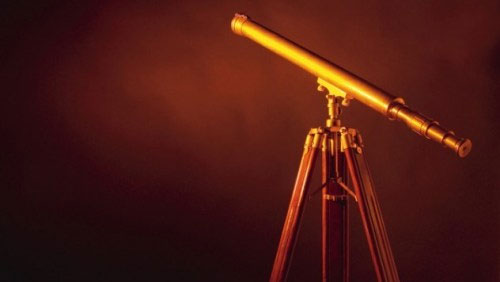Milestones of astronomy history
Inventing a telescope, spectroscopic application or for the first time predicting eclipse is a memorable milestone in the history of astronomical research.
1. Detecting the nature of stars is like the Sun.

In 1584, Italian philosopher Giordano Bruno was the first to hypothesize that stars were like the Sun, far away from Earth, but hundreds of years later, Bruno's idea was justified. and accept popularity in the scientific world.
2. First measure distance in light years

Friedrich Bessell, a Russian astronomer, was the first to measure the distance of stars in light years. In 1838, he used parallax measurements to determine the distance from star 61 Cygnus to Earth to 10.3 light years, not much different from the figure measured by the modern method of 11.4. . Bessel was a major contributor to astronomy and mapped the location of more than 50,000 stars.
3. Inventing a telescope

In 1608, Hans Lippershey, the eyewear maker living in Middelburg, the Netherlands, accidentally invented a device capable of increasing magnification by up to three times. However, the device did not have any application into astronomy until it was noticed by Galileo. Galileo created another version of the telescope with 10 times the magnification of the original version with a lens of about 1.3m in length, objective lens with a diameter of 130cm and 4-5cm eyepieces. The telescope invention paved the way for human understanding of the diverse existence of the universe.
4. Applied spectroscopy for the first time

Spectral techniques use light to pass through an intermediate object onto a surface, to create a different color range. In particular, components with different wavelengths will produce different colored lines. This process helps determine the composition of objects in the universe, even at a distance away from the Earth. Spectroscopy was invented in the early 19th century by Joseph von Fraunhofer, who used it to analyze light from the Sun and Moon.
5. Detecting asteroids

In 1801, Swiss scientist Giuseppe Piazzi observed and found a star that was quite faintly moving. After a few weeks of observation and research, he suggested that this could be a tailless comet, later proven to be an asteroid named Ceres. Until now, scientists have discovered about a million asteroids in the solar system and are very small in size.
6. The first photo captures an object in space

In 1839, Louis Daguerre became the first person to photograph the Moon. However, the photo has not survived to this day because his photographer's laboratory was burnt shortly afterwards. The oldest photograph of the Moon was taken by John Adams Whipple in 1851.
7. For the first time predict eclipse phenomenon

The prediction of the first solar eclipse was Thales living in Milete, an ancient Greek city, in 585 BC. According to the Greek historian Herodotus, Thales predicted a solar eclipse coinciding with a battle between two empires belonging to present-day Turkish territory. When the solar eclipse appeared, the warriors had to lower their weapons, stop fighting and the two sides signed a peace treaty ending 15 years of war.
8. Discovering infrared rays

In 1800, British astronomer William Herschel used a prism to scatter light from the Sun and discovered infrared rays with longer wavelengths of light, outside the visible light of the naked eye. Today, astronomers observe the universe in many different ways, from radio waves to gamma rays on the electromagnetic spectrum.
9. The first time to measure the speed of light

The first estimate of the speed value of light was calculated by Danish astronomer Ole Roemer in 1676 when the Moon's orbit was not fixed but changed cyclically, according to which cycle was smaller when Left The land is closest to Jupiter. Since then, Roemer has hypothesized that the greater the distance, the more time it takes for light to be transmitted to Earth and vice versa. Based on a study by Roemer, Dutch scientist Christiaan Huygens calculated the speed of light equivalent to 210,824 km / s, not much different from the true value of 299,792km / s.
10. Detecting Andromeda galaxy

In 964, Persian astronomer Abd-al-Rahman Al Sufi discovered Andromeda, a spiral galaxy outside the Milky Way. However, astronomers do not fully assume that this is a galaxy but only call it a "small cloud". The Andromeda galaxy was proved 1,000 later, when Edwin Hubble used a telescope to observe in 1924. After measuring stars' brightness, the Hubble estimated Andromeda lies about 860,000 light years away from the Milky Way. shining.
- Great milestones in the history of conquering the universe
- Milestones in 50 cash machine history: from ATM to VTM
- 8000 year history of mirrors
- The greatest landmarks in SpaceX history
- Astronomers map the history of the Universe
- History of currency development
- Milestones of national sovereignty over Truong Sa archipelago
- 10 most outstanding scientific events in 2016
- Radio astronomy and giant antennas
- Top 10 best astronomical apps on Android
- Climate change can destroy many cultural milestones
- America and the 'curse' on July 4
 Van Allen's belt and evidence that the Apollo 11 mission to the Moon was myth
Van Allen's belt and evidence that the Apollo 11 mission to the Moon was myth The levels of civilization in the universe (Kardashev scale)
The levels of civilization in the universe (Kardashev scale) Today Mars, the sun and the Earth are aligned
Today Mars, the sun and the Earth are aligned The Amazon owner announced a secret plan to build a space base for thousands of people
The Amazon owner announced a secret plan to build a space base for thousands of people